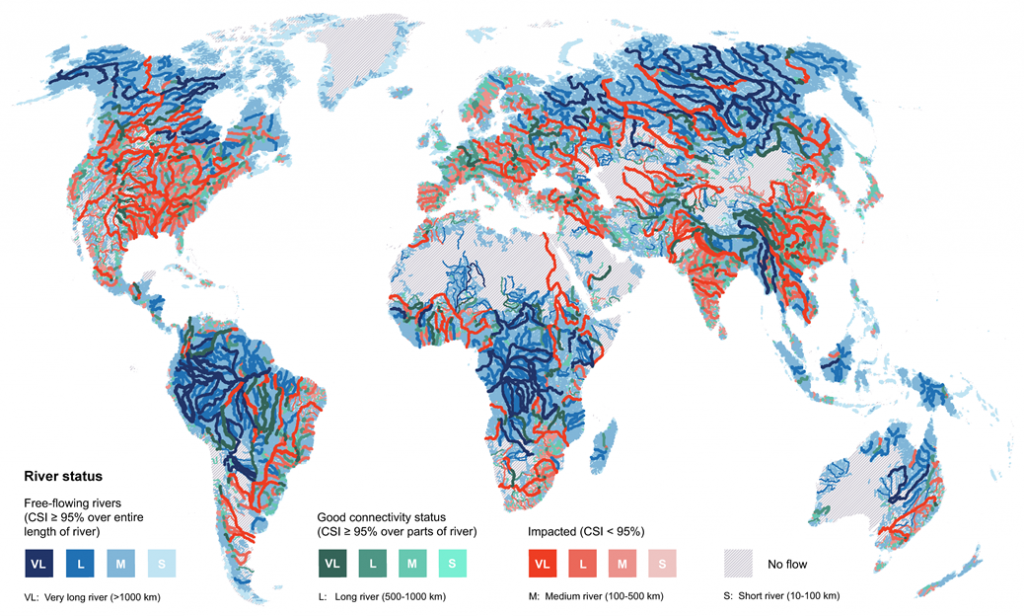Free-flowing Rivers
Only one-third of the world’s very long rivers remain free-flowing
Researchers from Global HydroLAB and World Wildlife Fund led a team of 34 international researchers in the first ever global assessment of the location and extent of the planet’s remaining free-flowing rivers. The team assessed the connectivity status of 12 million kilometres of rivers worldwide. The study is published in Nature.
Among other findings, researchers determined only 21of the world’s 91 rivers longer than 1,000 km that originally flowed to the ocean still retain a direct connection from source to sea. The planet’s remaining free-flowing rivers are largely restricted to remote regions of the Arctic, the Amazon Basin, and the Congo Basin.

Dams and reservoirs are the leading contributors to connectivity loss in global rivers. The study estimates there are around 60,000 large dams worldwide, and more than 3,700 hydropower dams are currently planned or under construction. They are often planned and built at the individual project level, making it difficult to assess their real impacts across an entire basin or region.
Free-flowing rivers provide crucial habitat for a host of animals, and support the survival of both people and nature around the world. Climate change will further threaten the health of rivers worldwide. Rising temperatures are already impacting flow patterns, water quality, and biodiversity.
Grill, G., Lehner, B., et al. (2019): Mapping the world’s free-flowing rivers. Nature 569 215-221. doi: 10.1038/s41586-019-1111-9 (Full-text access without subscription)
Related Publications
Grill, G., Lehner, B., Lumsdon, A.E., MacDonald, G.K., Zarfl, C., Reidy Liermann, C. (2015): An index-based framework for assessing patterns and trends in river fragmentation and flow regulation by global dams at multiple scales. Environmental Research Letters 10 015001. doi:10.1088/1748-9326/10/1/015001 (Open Access)
Grill, G., Ouellet Dallaire, C., Fluet-Chouinard, E., Sindorf, N., Lehner, B. (2014): Development of new indicators to evaluate river fragmentation and flow regulation at large scales: a case study for the Mekong River Basin. Ecological Indicators 45: 148-159. doi: 10.1016/j.ecolind.2014.03.026
Lehner, B. & Grill, G. (2013): Global river hydrography and network routing: baseline data and new approaches to study the world’s large river systems. Hydrological Processes27 (15), 2171-2186. doi: 10.1002/hyp.9740
Lehner, B., C. Reidy Liermann, C. Revenga, C. Vörösmart, B. Fekete, P. Crouzet, P. Döll, M. Endejan, K. Frenken, J. Magome, C. Nilsson, J.C. Robertson, R. Rodel, N. Sindorf, and D. Wisser. (2011). High-Resolution Mapping of the World’s Reservoirs and Dams for Sustainable River-Flow Management. Frontiers in Ecology and the Environment 9:494-502. doi: 10.1890/100125.